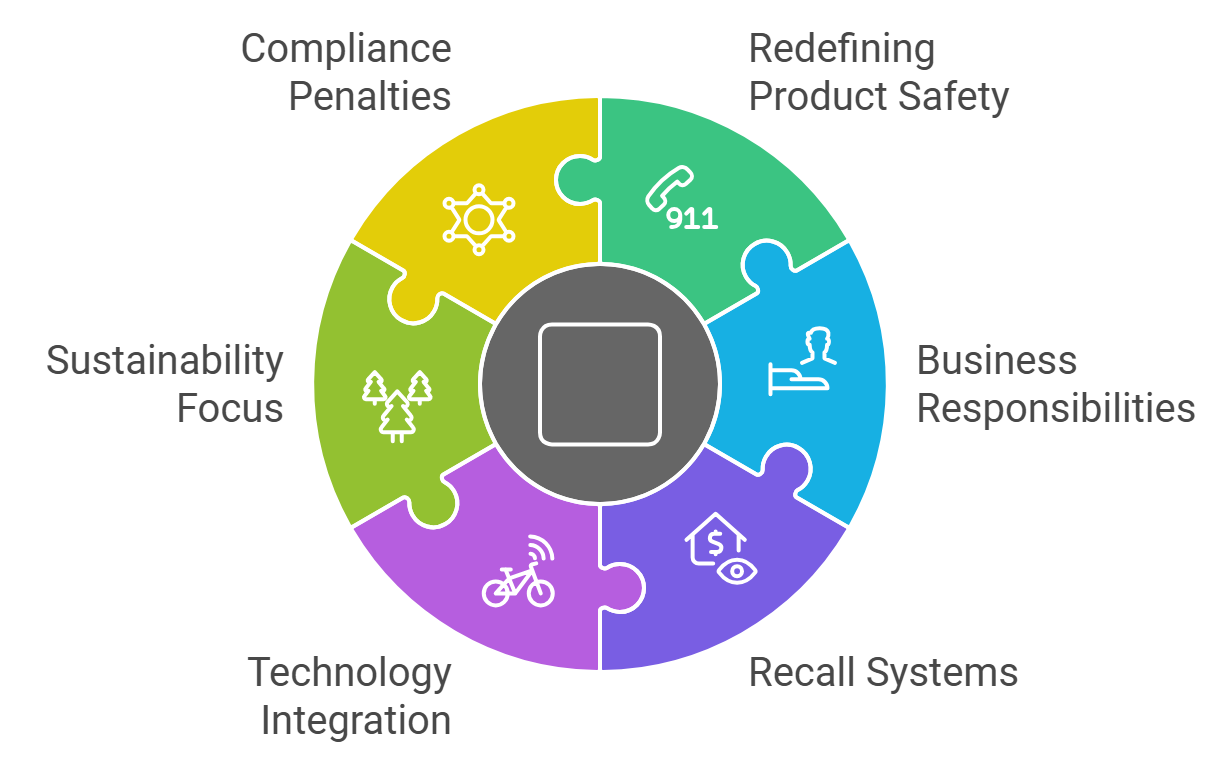How the EU’s General Product Safety Regulation (GPSR) Reinvents Consumer Protection
Modern rules for a safer, more sustainable market—what businesses need to know to stay compliant
The European Union’s General Product Safety Regulation (GPSR) marks a pivotal evolution in consumer safety standards, replacing the two-decade-old General Product Safety Directive (GPSD). As the global marketplace expands, with e-commerce and technological innovation reshaping consumer habits, these updated regulations aim to address modern challenges. The GPSR not only sets stricter safety protocols but also emphasizes sustainability and digital innovation, aligning consumer protection with environmental and technological goals. For businesses, these changes signal both challenges and opportunities. This article dives deep into the comparison of the two frameworks, unpacking what companies need to do to remain compliant and competitive.
From Directive to Regulation: A Structural Shift
The transition from the GPSD (2001) to the GPSR (2024) is more than just a regulatory update; it’s a transformation in how safety is enforced across the EU. The key difference lies in their legal structures:
The GPSD required transposition into national laws, leading to fragmented enforcement.
The GPSR, as a regulation, is directly applicable across all member states, ensuring consistency.
This harmonization eliminates discrepancies in enforcement, providing a uniform standard for consumer safety in both traditional retail and the burgeoning e-commerce sector.
Redefining Product Safety
Under the GPSD, product safety was defined in broad terms, focusing mainly on physical risks. The GPSR expands this scope significantly:
Cybersecurity: Recognizing risks associated with connected devices and IoT products.
Environmental Hazards: Emphasizing the importance of assessing a product’s environmental impact.
Vulnerable Consumers: Special protections for groups such as children, the elderly, and persons with disabilities.
By broadening the definition, the GPSR ensures that safety standards keep pace with modern challenges.
Key Changes in Business Responsibilities
For businesses, the GPSR introduces comprehensive responsibilities:
Proactive Risk Management: Companies must establish ongoing systems to assess risks, even after a product’s launch.
Marketplace Oversight: Online platforms are now accountable for ensuring third-party products meet compliance standards.
Liability Sharing: Importers and distributors face increased accountability for unsafe goods.
These measures aim to create a shared responsibility framework, ensuring every player in the supply chain contributes to consumer safety.
Enhanced Recall Systems
Under the GPSD, product recalls were often inconsistent, with vague guidelines for consumer communication. The GPSR introduces a centralized recall system:
Clear Communication: Businesses must provide straightforward, accessible information about recalls, including through digital channels.
Platform Involvement: Online marketplaces are obligated to notify customers of affected products.
This structured approach reduces response times and enhances consumer trust.
Leveraging Technology for Safety
The GPSR embraces technology to ensure safer markets:
Digital Labels: Products must feature online-accessible safety information.
IoT Regulation: Specific provisions address risks from connected devices, ensuring their cybersecurity integrity.
Real-Time Monitoring: Tools for tracking product safety in e-commerce environments.
This integration of technology highlights the EU’s forward-looking approach to consumer protection.
Sustainability and Environmental Focus
One of the most significant shifts in the GPSR is its emphasis on sustainability. Businesses are encouraged to:
Use recyclable materials in production.
Evaluate and reduce a product’s environmental footprint.
Align product design with circular economy principles.
This alignment with environmental goals reflects growing consumer demand for eco-conscious products.
Penalties for Non-Compliance
Penalties under the GPSR are more severe, aiming to deter non-compliance:
Fines: Up to 4% of annual turnover for serious breaches.
Market Bans: Repeated violations can result in prohibition from the EU market.
This stricter enforcement underscores the EU’s commitment to holding businesses accountable.
What Businesses Must Do
To comply with the GPSR, businesses should:
Implement Risk Management Systems:
Continuously assess and document risks.
Update safety assessments as product environments evolve.
Monitor Supply Chains:
Verify supplier compliance.
For online platforms, ensure third-party products meet safety standards.
Enhance Traceability:
Develop systems to track products from production to sale.
Maintain detailed records to facilitate recalls if needed.
Invest in Technology:
Use tools for real-time safety monitoring.
Secure IoT devices against cybersecurity threats.
Promote Sustainability:
Adopt eco-friendly practices in production.
Align product designs with environmental guidelines.
Conclusion
The transition from the GPSD to the GPSR is not just about stricter rules; it’s about aligning safety, sustainability, and technology with modern consumer expectations. For businesses, this shift presents both challenges and opportunities—from building consumer trust to gaining a competitive edge in a greener, safer marketplace. Compliance with the GPSR is more than avoiding fines; it’s a strategic step towards long-term success in a rapidly evolving market.
#ProductSafety #GPSR2024 #Sustainability #ConsumerProtection #DigitalCommerce #BusinessCompliance #EURegulations





